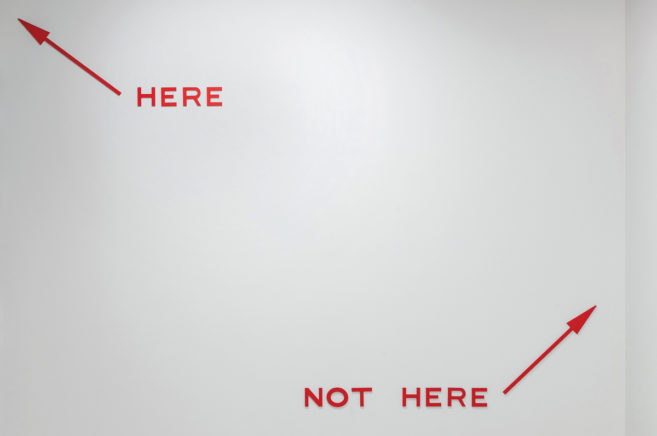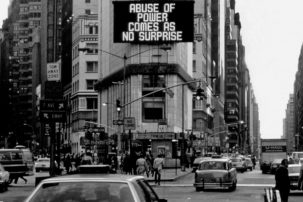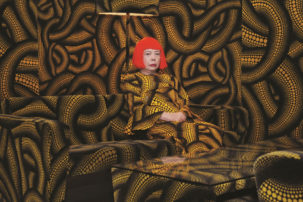It’s a daunting task to look back and reflect on 2016. It’s a task made more daunting as many of us grapple with how art, and writing about it, can possibly have enough traction or meaning when faced with such bleakness.
Yet, from my new home in Alberta, I have seen the possibilities that art still holds, and the hope we can find amid such wholesale disheartenment. My picks for this year take up some of those possibilities—and the people and places through which they have come to be in 2016.
 An installation view of Nicole Kelly Westman’s Rose, Dear at the Banff Centre earlier this year. Photo: via Banff Centre Facebook page.
An installation view of Nicole Kelly Westman’s Rose, Dear at the Banff Centre earlier this year. Photo: via Banff Centre Facebook page.
Nicole Kelly Westman
There are particular evolutionary conditions that allow wild sage, sweetgrass, cacti, rose and Saskatoon bushes to grow on the otherwise arid, sedimentary terrain of the Badlands. Their roots don’t even come close to brushing up against the various forms of black gold and Late Cretaceous bones that live beneath this moon-like-scape. Aside from the sage and other flora, that’s what the Badlands look precisely like: a lunar surface pocked by strange canyons and columnar formations, hoodoos, coulees and gullies—all words that themselves seem lunar in the sense that the moon has some kind of magic.
Such magic threads Nicole Kelly Westman’s Rose, Dear, an ongoing project that was first exhibited at the Banff Centre in the Eric Harvie West Lobby, then in Toronto at Gallery 44. It smells of sage out here, like an old friend, written whisper-like on a cuculoris-inspired lightbox, stands as a harbinger of things to unfurl in the accompanying video work. Westman’s project was born in Wayne, Alberta, a town made ghostly in the wake of the coal-industry collapse. The Rosedeer Hotel and (appropriately) the Last Chance Saloon are the only remnants still slightly abuzz in this otherwise tumbleweed-ridden hamlet—Westman imagines this locale, drenched as it is in a beer-bottle-smashing, horse-riding, dusty tobacco player-piano kind of machismo, as haunted not by gruff coal miners, but rather powerful and resilient female spirits. One gets the sense that they are benevolent, yet are forces to be reckoned with.
In addition to her ambitious art practice, Westman is also the director at Stride Gallery, where her keen sense of timeliness and generosity have served to buttress an already vibrant program. In the directorial context, she talks often of the idea of being a host—what it means to be vulnerable in that position, and how it relates to being hosted in return—considerations that reciprocally anchor her practice. Recently, she invited Vancouver-based artist Anne Riley to spend time in Calgary before her upcoming exhibition with Brittney Bear Hat at Stride in the new year. For some, it’s a hard sell: come way out to the prairies, live and work here for a while, understand our particularities and isolation. Hosting here, it seems, is more about beautiful conversations, buffets of chips, a hot bowl of stew in an apartment full of friends and a sidewalk swig of Jägermeister to keep warm, than ubiquitous art-world schmoozing. You should really come visit sometime—we’d be happy to have you.
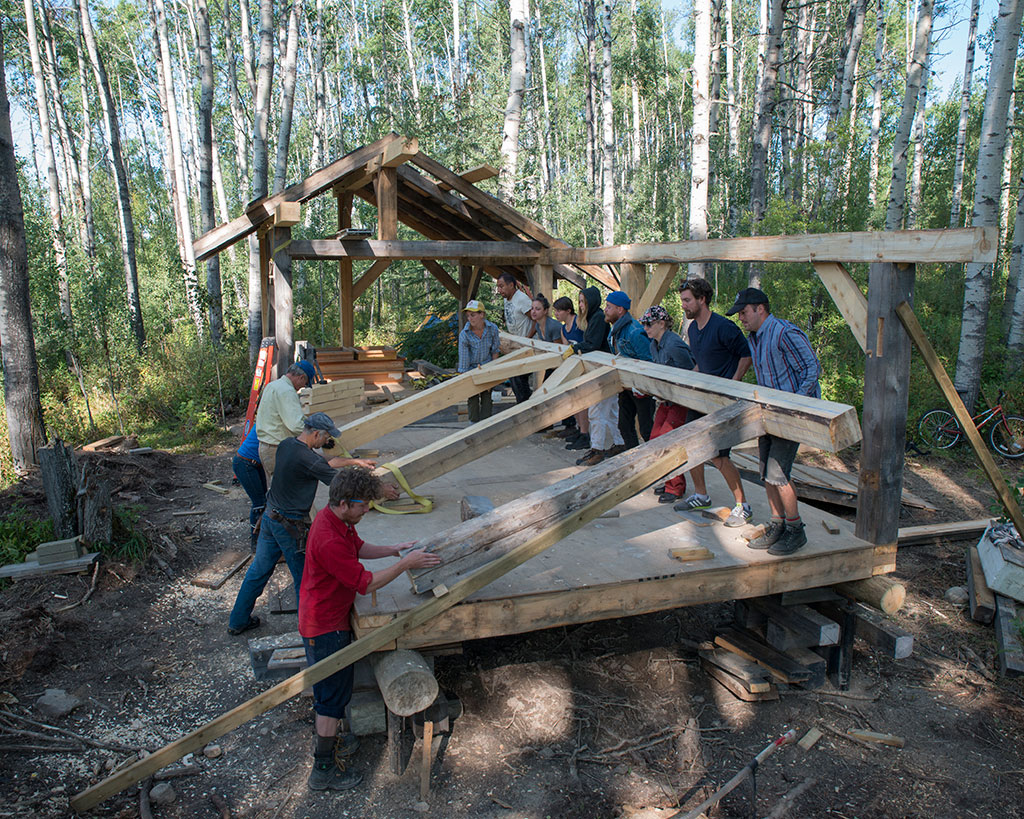 An image of a group at work at Common Opulence, a summer residency run by Peter von Tiesenhausen near Demmitt, Alberta.
An image of a group at work at Common Opulence, a summer residency run by Peter von Tiesenhausen near Demmitt, Alberta.
Common Opulence
Another landscape now, one characterized by the thick bush, old growth (where it hasn’t been clear-cut) and sprawling fields (where they haven’t been flooded by dams). The mosquitos are bad in the summer, and the winter is bad in all ways (but very beautiful). The Peace Country, in northern Alberta, is where Peter von Tiesenhausen lives and works.
Von Tiesenhausen is perhaps best known in mainstream media for his activist work around the land in Demmitt, Alberta—notably, he’s used his work to protect several large swaths of land from enterprising oil companies, which are keen to offer farmers a hefty sum to drill on their properties or run pipelines through them. On the property where he lives, von Tiesenhausen has spent more than 30 years creating works that inhabit its expanse—Lifeline, in which the artist adds a length of white fence once a year, a poetic means of measuring what constitutes a year, a life—and his discreet interventions upon the bark of trees, for example, have allowed him to claim copyright over the land as an artwork and to consequently protect it from the sallow hands of oil moguls.
The artist is also known for various works related to this practice, including his itinerant group The Watchers who’ve circumnavigated the entirety of the country—they are currently on view, 20 years after their first journey, at Jarvis Hall Fine Art in Calgary. To be clear, von Tiesenhausen’s earthworks share little with the imperious interventions of artists like Robert Smithson and Richard Serra. His, rather, disintegrate and are metabolized in natural cycles by the land that they serve to protect.
For the past two summers, von Tiesenhausen has been running Common Opulence, a residency where a dozen or more artists from the prairies and further afield come up north to Demmitt and work together to build the infrastructure for a more permanent residency to be available to any artist or writer or person in need of a roof and some time to make work. Residents camp for the duration of their stay, work on the timber-frame cabins and facilities in the morning, and usually make their own work in the afternoon or gather supplies to make dinner for the group—so many wild mushrooms. In times as precarious as these, it feels hopeful that land rich in resources is being protected, and used instead as a means to offer a sustainable future for those who are fighting for it.
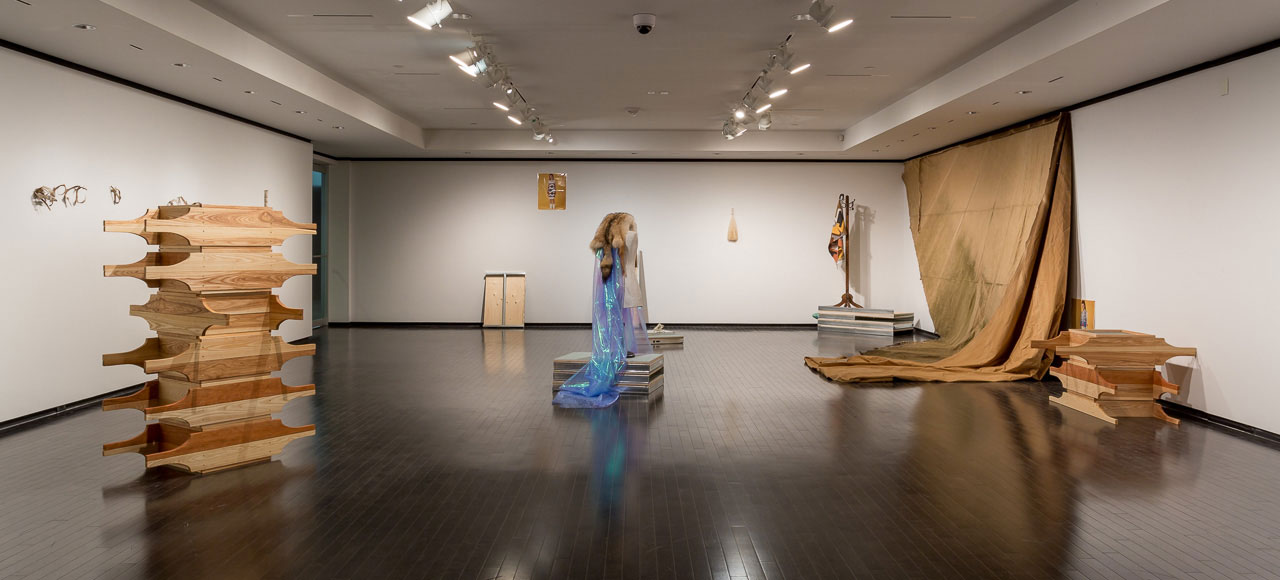 A view of Duane Linklater and Tanya Lukin Linklater’s exhibition “A Parallel Excavation” (2016) at the Art Gallery of Alberta, curated by Ociciwan Contemporary Art Collective. Courtesy of the artists. Photo: Blaine Campbell.
A view of Duane Linklater and Tanya Lukin Linklater’s exhibition “A Parallel Excavation” (2016) at the Art Gallery of Alberta, curated by Ociciwan Contemporary Art Collective. Courtesy of the artists. Photo: Blaine Campbell.
Ociciwan Contemporary Art Collective
The most thoughtful and important projects happening in Alberta (and in Canada more broadly) right now are tethered to Ociciwan Contemporary Art Collective. A powerhouse of Indigenous women, the collective curated “A Parallel Excavation: Duane Linklater & Tanya Lukin Linklater” at the Art Gallery of Alberta—indisputably one of the most important exhibitions of 2016—“Scene Report, With Wendy” by Walter Scott for Edmonton’s inaugural Nuit Blanche, “Urban Spaces” with Tanya Harnett and Jeff Thomas at AKA Artist-Run in Saskatoon, and most recently The Shawls Project, which sees Indigenous youth in Edmonton working closely with artist Faye HeavyShield to create shawls as a means to heal and to honour murdered and missing Indigenous women. In 2017, Ociciwan will be doing projects with Dayna Danger at Latitude 53 , as well as with Postcommodity and Alex Waterman.
The members’ respective resumes are as impressive as the work they’ve done together. The collective is comprised of Becca Taylor, an artist and curator who recently curated “A light left on” at the Banff Centre; Amy Malbeuf, whose work is being shown widely across Canada right now in solo and group exhibitions; Tiffany Shaw-Collinge, whose work straddles architecture and installation; Erin Sutherland, a curator and academic whose work broadly considers ideas of memory, Indigenous masculinities and performance; Jessie Short, a Calgary-based artist and filmmaker; and Kristy Trinier, a non-Indigenous member of the collective who is currently curator at the Art Gallery of Alberta and future director of Visual and Digital Arts at the Banff Centre. Together, as individually, their work has been and will continue to be what we should all collectively aspire to support and foster.
Ociciwan is a Plains Cree word that translates to “the river current comes from there.” In 2017, let’s follow this current and continue to be generous hosts, protect the land and support futures that are empowered, Indigenous, female and, ultimately, hopeful.
Natasha Chaykowski is a Calgary-based writer and curator, and the director of Untitled Art Society.

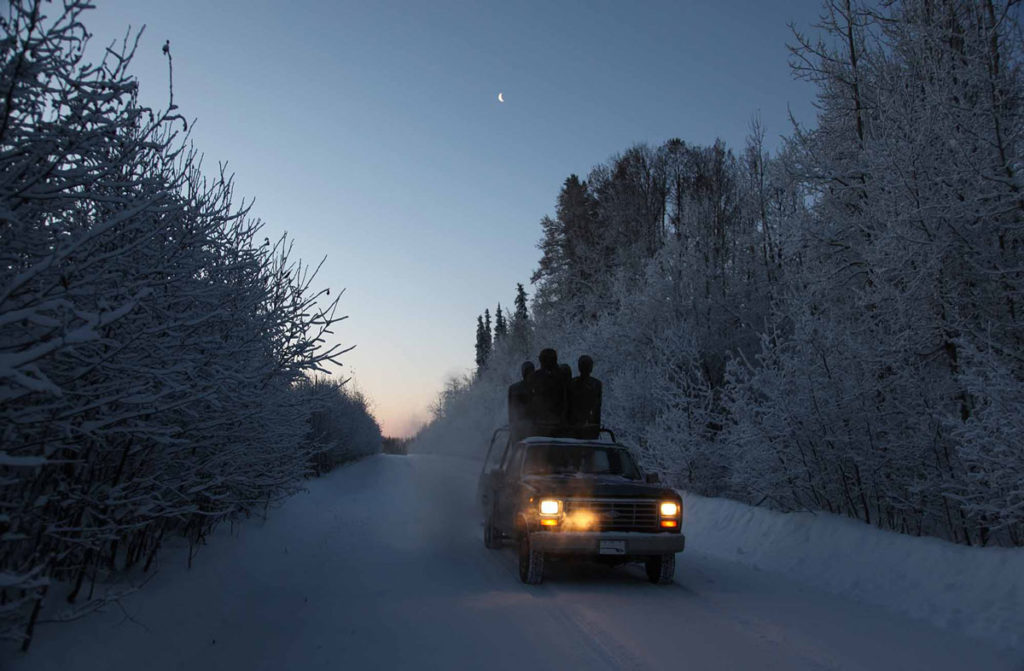 For The Watchers, Peter von Tiesenhausen transported sculptures across the country in a 30,000 kilometre journey. The project is currently being revisited, 20 years later, at Jarvis Hall Fine Art.
For The Watchers, Peter von Tiesenhausen transported sculptures across the country in a 30,000 kilometre journey. The project is currently being revisited, 20 years later, at Jarvis Hall Fine Art.
